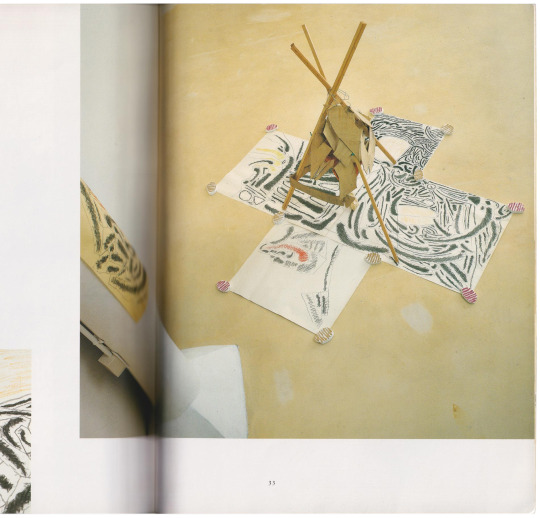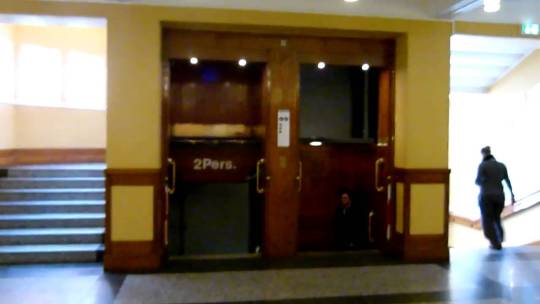#paternoster
Text










"Pater Noster," Hamneskär, Sweeden,
Stylt Trampoli Design
#art#design#architecture#boutique hotel#travels#interior design#luxury hotel#luxury lifestyle#interiors#luxury hotels#island#swEden#hammeskar#paternoster#stylt trampoli
21 notes
·
View notes
Text

the shimmering out there before the rocks
photography + © Christof Keßemeier
12 notes
·
View notes
Text

Richard Tuttle: Twenty Floor Drawings, Institute of Contemporary Art, Amsterdam / SDU Publishers, Den Haag 1991 [BOOKS@, Amsterdam. © Richard Tuttle]



Text: Susan Harris
Editor: Beth O'Brien
Translation: Nelleke van Maaren
Photograpoher: Paternoster, Amsterdam
Design: Hans Bocking (UNA)
Typesetting and Printing: Drukkerij Roskeek, Nuth
Exhibition: Institute of Contemporary Art, Amsterdam, 1991
#graphic design#art#drawing#sculpture#structure#pattern#catalogue#catalog#cover#back cover#richard tuttle#susan harris#beth o'brien#nelleke van maaren#paternoster#hans bocking#drukkerij roskeek#institute of contemporary art amsterdam#1990s
22 notes
·
View notes
Photo

This is my Secret Samol 2022 gift for suedeuxnim on twitter :) She wanted Elena Flores x Hilda Quick on a boardwalk date, as fluffy as I could make it! I had a lot of fun trying to fulfill the prompt~
#secret samol#secret samol 2022#elena flores#hilda quick#the champ#paternoster#Friends at the Table#this takes place during season one of bluff because have not listened to season 2 just yet#bluff city#art tag
44 notes
·
View notes
Text


Another Fatt fanart from 2020! This one was a secret Samol request for Hilda Quick and Chanti Park from midsummerjay over on twitter!
I had so much fun with this one messing with the composition and the mirror imagery for their alter egos!
#fatt#fatt fanart#friends at the table#bluff city#paternoster#hilda quick#grouse#chanti park#masks ttrpg#friendsatthetable#ssart#secret samol#2020 art#22 october 2022#scarletstatic
34 notes
·
View notes
Text
What about Paternoster?

View On WordPress
0 notes
Text
Media review — Bach: Suite No.2 for Cello Solo in D minor, BWV 1008. 24 artists / 26 complete recordings, from historic to modern to HIP: Casals (1939), Fournier (1961), Bylsma (1979), Rostropovich (1991), Bylsma (1992), ter Linden (1996), Paternoster (1998), Wispelwey (1998), Pandolfo (2000, viola da gamba), Isserlis (2005), Queyras (2007), Gaillard (2010), Wispelwey (2012), Enders (2013), Watkin (2013), Demenga (2014), Dumas (2016), Kashkashian (2017, viola), Malov (2018, violoncello da spalla), Bertrand (2019), Teichmanis (2019), Kloeckner (2020), Rignol (2020, viola da gamba), Philippe (2021), de Naverán (2021), Skalka (2020)
#rolfsmblog#jsbach#bach#cello#cellosolo#violoncello#solocello#violadagamba#viola#violoncellodaspalla#suites#review#comparison#cdcomparison#casals#fournier#bylsma#rostropovich#terlinden#paternoster#wispelwey#pandolfo#isserlis#queyras#jeanguihenqueyras#gaillard#opheliegaillard#enders#isangenders#watkin
0 notes
Text
Memories from Summer 2022 Part 1

View On WordPress
#!Khwa ttu#Cape West Coast#featured#Holiday#Langebaan#Memories#Paternoster#Relax#Summer#Travel#Vacation
0 notes
Text
One thing that makes me deeply regret my ancestors choice to move to Australia is the fact that I have so few opportunities to ride on a paternoster lift.
Just absurd, bizarre, yet practical modes of transport between floors.
I want to ride on one so badly.
0 notes
Text
Le paternoster de Titan, un ascenseur qui ne s'arrête pas aux étages [vidéo]
Nouvel article publié sur https://www.2tout2rien.fr/le-paternoster-de-titan-un-ascenseur-qui-ne-sarrete-pas-video/
Le paternoster de Titan, un ascenseur qui ne s'arrête pas aux étages [vidéo]

0 notes
Text
Give us this day our "daily" bread. Really?

The quickest way to get people riled up on the internet is to talk about politics or religion (or possibly sports), so I generally try to keep those topics out of my Word of the Day posts (with the exception of the handful of times I’ve been compelled to write about the Big Fat Orange Insurrectionist. You can look in the archive for entries on revanchism, sleazy, ignoramus and quockerwodger, among others).
At the prompting of my old fried Henry, though, we’re going to delve into religion today. Specifically, the Lord’s Prayer. And even more specifically, the line about giving us our daily bread. The Word of the Day is “daily.”
The Lord’s Prayer (a.k.a. Pater Noster or Our Father) shows up twice in the Gospels. Now, I’m certainly no Bible scholar, but as I understand it, in Matthew 6:11 and Luke 11:3, Jesus is teaching his disciples the correct way to pray. “Our Father, in heaven, hallowed be thy name” and all that stuff, and then “Give us this day our daily bread…” Now, I always thought the Bible was originally written in Hebrew or Aramaic, but Henry explained to me that the Gospels in the New Testament were written in Greek. And the Greek adjective to describe that bread we’re supposed to pray for is “epiousion.” It only appears in the Bible twice, in those two mentions of the Lord’s Prayer in Matthew and Luke. “Give us this day our epiousion bread. In fact, the word doesn’t show up in any other Greek texts, either. It appears nowhere else. So there’s lots of debate about the actual meaning. Did Matthew and Luke just make it up?
The traditional English translation of “epiousion” is “daily,” but there’s another Greek word for daily, “hemera” that appears throughout the New Testament. If Matthew and Luke wanted to write about “daily” bread, why not use that word?
Some scholars say “epiousion” means “super-essential” or “super-substantial” (the “ousia” part means “substance”). That could lead us down a rabbit hole of transubstantiation – you know, the whole “This wafer (bread) is really the body of Christ. Now eat it!”
An Egyptian papyrus once believed to be from the fifth century appears to be a grocery shopping list that supposedly included the word “epiousi” before several items, and that was believed to mean “enough for today” or “enough for the next day.” But modern scholars think that was probably just an error in transcription.
Since scholars have nothing better to do than argue about this stuff, other interpretations of epiousion include: necessary, necessary for life, for the coming day, for the future, for our sustenance, or for our being. Any way you look at it, that is some hard-working bread! Which is the “correct” interpretation? As far as I’m concerned, that’s between you and the Lord.
Okay, that takes care of the “daily” part of the Lord’s Prayer, but what about the bread? Are we talking leavened or unleavened? White or wheat (or rye or pumpernickel)? Plain or toasted? It’s all too much for me. I think I’ll go make a sandwich. Hold the bread.
1 note
·
View note
Text

needful things at the Western Cape
photography + © Christof Keßemeier
15 notes
·
View notes
Text
𒀜𒁕𒉌𒊭𒅖𒊭𒈨𒂊
𒈬𒍪𒌨𒋫𒀜𒁹
𒆤𒇷𒄰𒉆𒈗𒍪
𒀀𒉿𒋾𒂵𒇷𒉈𒄫
𒀝𒄀𒄠𒊭𒅖𒊭𒈨𒂊
𒅇𒅔𒆠𒁴
𒀀𒃲𒌓𒈪𒅎𒉌𒁷𒉌𒀀𒋾
𒀸𒈪𒄭𒀉𒎗𒉌
𒀝𒄀𒄠𒀀𒈾𒋗𒌓
𒄿𒁕𒊍𒉌𒀀𒋾𒉡𒉘𒈪
𒅇𒌓𒁺𒉌𒅍𒌨𒀀𒈾𒄀𒅖𒁇𒍜
𒋗𒍣𒅁𒉌𒀀𒋾𒅖𒉈𒇷𒅎𒉏
#akkadian#ancient languages#babylonian#cuneiform#mesopotamia#semitic languages#assyriology#our father#paternoster#lord's prayer
1 note
·
View note
Link
Un ascensore senza porte che viaggia di continuo 'a catena' (come un rosario, da qui il nome), pericolosissimo e ormai proibito quasi in tutti i Paesi. Se non avete mai visto un paternoster dal vivo vi consiglio di dare un'occhiata al link [in fondo alla pagina, dopo la traduzione in inglese] perché è veramente difficile immaginare come funziona.
TRASCRIZIONE [ENG translation below]
La prima volta che sentii parlare del paternoster fu mentre leggevo uno dei miei libri preferiti in assoluto, uno di quei libri che ho letto tantissime volte, ho regalato innumerevoli volte e anche dopo averlo letto diverse volte non mi ha mai stancato. Il libro è Opinioni di un Clown di Heinrich Böll. Nel libro, appunto, si parlava, si descriveva il paternoster. Cosa è?
È un ascensore molto particolare, che anzitutto non ha porte, e poi, proprio come un padrenostro, si ripete ciclicamente. Immaginatevi una catena, un anello che viaggia in orizzontale, formato da tante piccole cabine senza porta, per cui la caratteristica è che viaggia molto lentamente, per cui in qualsiasi momento una persona può entrare oppure uscire, proprio fa un saltino, ci entra dentro una di queste scatole che poi va su, oppure salta fuori.
Era molto in uso nel secolo scorso, soprattutto tra gli anni '30 e gli anni '60 e veniva utilizzato soprattutto negli edifici pubblici perché effettivamente permetteva di muovere un grande numero di persone molto più velocemente degli ascensori normali. Vi metto comunque un link nelle note del programma perché difficile immaginarlo se non l'avete mai visto.
Non avendo porte, questo ascensore era però anche molto incline agli incidenti. Infatti adesso in quasi tutti i paesi è vietata l'installazione di nuovi ascensori di modello paternoster. Molte, molte nazioni li hanno, gli hanno banditi già da tantissimo tempo fa, perché effettivamente, nonostante viaggino molto lentamente, ho controllato, viaggiano alla velocità di 30 centimetri al secondo, mi pare sì 30 centimetri al secondo, però non avendo le porte, veramente molto molto facile cadere, è molto facile rimanere anche ammazzati.
La Germania era disseminata, c'erano tantissimi di questi ascensori di modello paternoster, infatti non per niente il mio primo incontro è avvenuto in un libro di un grande scrittore tedesco.
Hanno cercato diverse volte di vietarli. Nel 1974 hanno vietato l'installazione di nuovi paternoster nella Germania federale e nel 1994 hanno cercato di chiudere quelli esistenti. Ma c'è stato un sollevamento di popolo e non ci sono riusciti. Hanno riprovato ancora nel 2015, però ancora ci sono diversi ascensori paternoster in Germania, e addirittura la ditta che produce energia solare, Solon, nel 2009 ha avuto il permesso per farsene costruire uno nella sua sede di Berlino. Quindi se passate per Berlino cercatevi il paternoster.
TRANSLATION
The first time I heard of the paternoster was while I was reading one of my favorite books ever, one of those books that I have read countless times, given away countless times and even after reading it several times I have never tired of it. The book is Opinions of a Clown by Heinrich Böll. In the book, in fact, there is the description of the paternoster.
What is it? It is a very particular lift, which first of all has no doors, and then, just like an Our Father in the rosary, it goes cyclically. Imagine a chain, a ring that travels horizontally, made up of many small cabins without a door, the characteristic is that it travels very slowly, so that a person can enter or exit at any moment, just taking a tiny jump, entering one of these boxes which then goes up, or down.
It was widely used in the last century, especially between the 1930s and 1960s and was mainly used in public buildings because it actually allowed a large number of people to move much faster than normal elevators. I'll put a link in the program notes anyway because it's hard to imagine if you've never seen it.
Anyway, having no doors, this elevator was also very accident-prone. In fact, the installation of new paternoster is now prohibited in almost all countries. Many, many nations have already banned them a long time ago, because actually, although they travel very slowly, I checked, they travel at a speed of 30 centimeters per second, I think so, yes 30 centimeters per second, but not having doors, it's really very easy to fall out, it's very easy to get killed too.
Germany was scattered, there were so many of these paternoster model elevators, in fact, it was not for nothing that I first met them in a book by a great German writer. They have tried several times to ban them. In 1974 they banned the installation of new paternosters in West Germany and in 1994 they tried to close the existing ones. But there was a popular uprising and they didn't succeed. They tried again in 2015, but there are still several paternoster in Germany, and actually the solar energy company, Solon, in 2009 was given permission to have one built at its headquarters in Berlin. So if you pass through Berlin look for the paternoster.
LINK
Ecco come funziona un paternoster https://it.wikipedia.org/wiki/Paternoster
Un articolo intitolato L'ascensore più pericoloso al mondo https://www.milanocittastato.it/featured/paternoster-lascensore-piu-pericoloso-al-mondo-dove-chi-lo-prende-deve-pregare-il-signore/
Opinioni di un Clown di Heinrich Böll https://it.wikipedia.org/wiki/Opinioni_di_un_clown
#3minutigrezzi#ascensore#berlino#incidenti#incidentiascensore#micropodcast#paternoster#podcast#tecnologie#treminutigrezzi
0 notes

